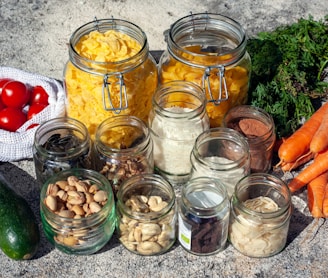Your Guide To Food Waste Reduction
SUSTAINABILITY ISLAND LIVING


Let’s face it: we’re all guilty of letting that sad carrot wilt in the back of the fridge or forgetting about leftovers until they resemble science experiments. But did you know that roughly one-third of the world’s food goes to waste? That’s like ordering a pizza and throwing away a third before even opening the box. Reducing food waste isn’t just good for the planet—it’s a huge money saver and a way to live more sustainably.
Here are some practical tips to make food waste reduction a part of your daily life.
1. Meal Planning: Your Secret Weapon Against Waste
The next time you grocery shop, channel your inner planner. Instead of shopping on impulse (we’ve all fallen victim to buying that random artisanal cheese), plan your meals ahead of time. Not only does this help you avoid food waste, but it also saves you from that moment of “What’s for dinner?” panic.
How to start: Create a weekly meal plan that uses similar ingredients. If you’re making stir-fry one night, use those same veggies for a salad or soup later in the week.
Luminisle Tip: Check your fridge and pantry before heading to the store. This prevents you from buying duplicates of things you already have, like that extra jar of mustard that’s already gathering dust.
2. Get to Know Your Freezer
If food had a best friend, it would be your freezer. When life doesn’t go according to your meal plan and you know you won’t use that spinach before it wilts, pop it in the freezer. Freezing extends the life of almost anything—from bread to herbs to leftovers.
Luminisle tip: Label your frozen items! You’ll save yourself from playing “What is this mystery block of ice?” weeks later.
Freeze with purpose: For veggies, blanch them first (a quick dip in boiling water) to preserve their color, flavor, and texture before freezing.
3. Store Food Like a Pro
Storing food properly can extend its life and help prevent waste. Different foods have different needs—some prefer the fridge, while others love the countertop.
Luminisle Tip: Keep your leafy greens fresh by wrapping them in a damp towel and storing them in a breathable bag. On the flip side, tomatoes and bananas prefer the counter. But be warned: bananas speed up the ripening of anything nearby, so keep them solo!
Zero-Waste Hack: Use glass jars or reusable containers for storing grains, nuts, and dried goods. They’ll stay fresh longer, and you’ll reduce the number of plastic bags in your pantry (win-win!).
4. Compost: Give Food Scraps a Second Life
Not all food scraps need to head to the trash. Enter composting—the environmentally friendly way to recycle food scraps into rich, fertile soil. Composting not only reduces landfill waste but also helps your garden thrive if you’re into that sort of thing.
What to compost: Think veggie peels, coffee grounds, eggshells, and that questionable lettuce that didn’t make the cut. Avoid meat, dairy, and oily foods as they can attract pests.
How to compost at home: You can start with a simple compost bin or, if you’re feeling adventurous, try vermicomposting, which involves worms turning your scraps into compost gold. (Yes, worms are your new eco-friendly sidekicks.)
5. Love Your Leftovers
Instead of thinking of leftovers as sad remnants, treat them like bonus meals. A little creativity can transform them into something new. Got leftover roasted veggies? Turn them into a frittata. Yesterday’s rice? Hello, stir-fry.
Pro tip: Store leftovers in clear containers, so you can actually see what you have. Out of sight often means out of mind when it comes to that back-of-the-fridge situation.
Batch cooking: Cook in bulk, portion out meals, and freeze or refrigerate them for later in the week. This is a great way to avoid midweek takeout temptation while using up what you’ve got.
6. Shop Ugly
The next time you’re at the grocery store, resist the temptation to only pick the prettiest produce. Those quirky, misshapen fruits and veggies are just as delicious (and often cheaper). Supporting “ugly produce” helps reduce waste since they’re often rejected by supermarkets despite being perfectly edible.
7. Make Your Own Broth
One of the best ways to use up food scraps is to make homemade broth. Save vegetable peels, herb stems, and even chicken bones in a freezer bag. Once you have enough, simmer them into a rich broth you can use for soups, stews, or cooking grains.
Every Bite Counts
Reducing food waste doesn’t have to be a full-time job, and you don’t have to be perfect at it. Small, mindful changes in how you buy, store, and use food can make a big difference. Not only will you reduce your environmental impact, but you’ll also save money and feel good about squeezing every bit of goodness out of the food you buy. Think of it as giving your food the happy ending it deserves! 🌿


